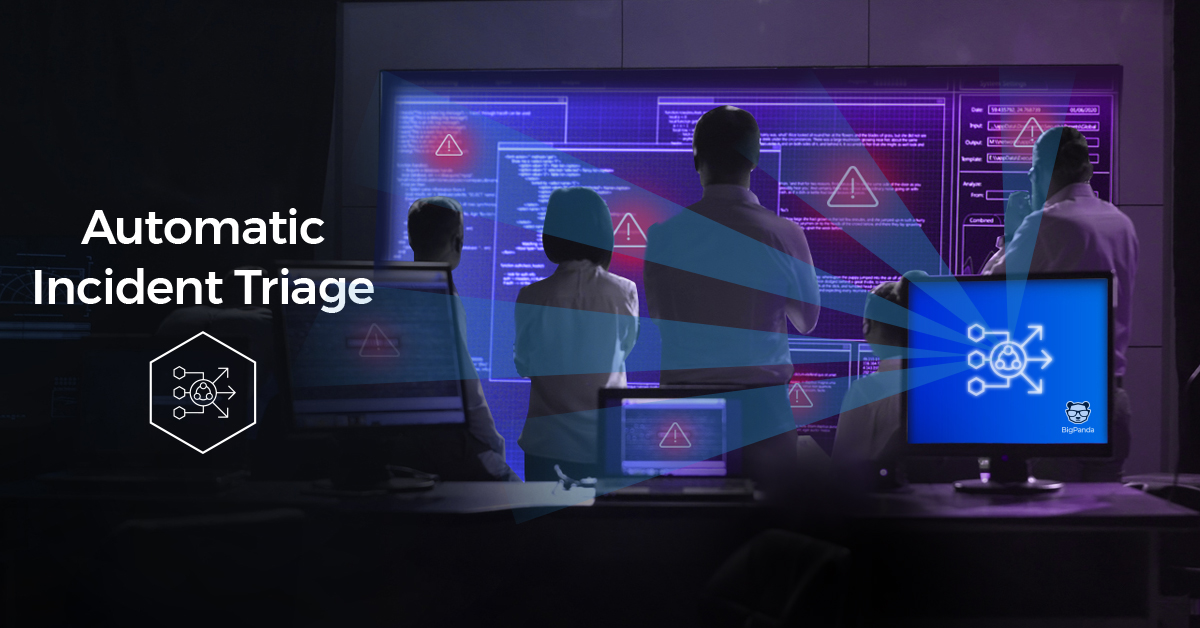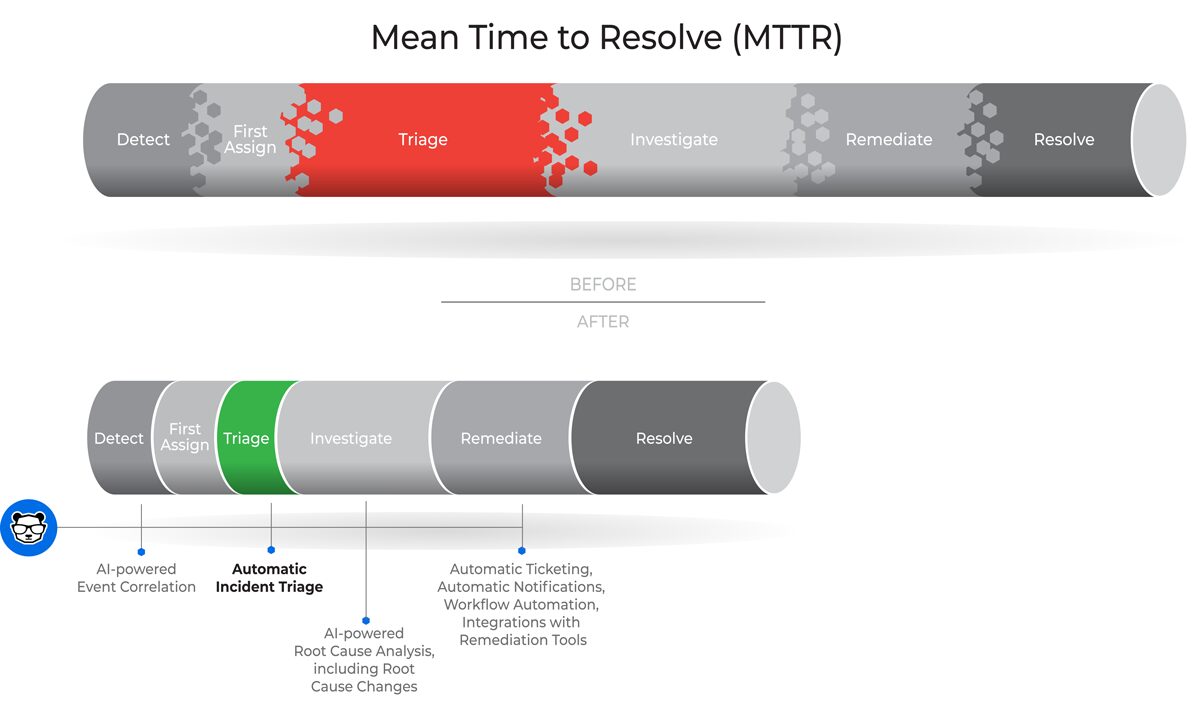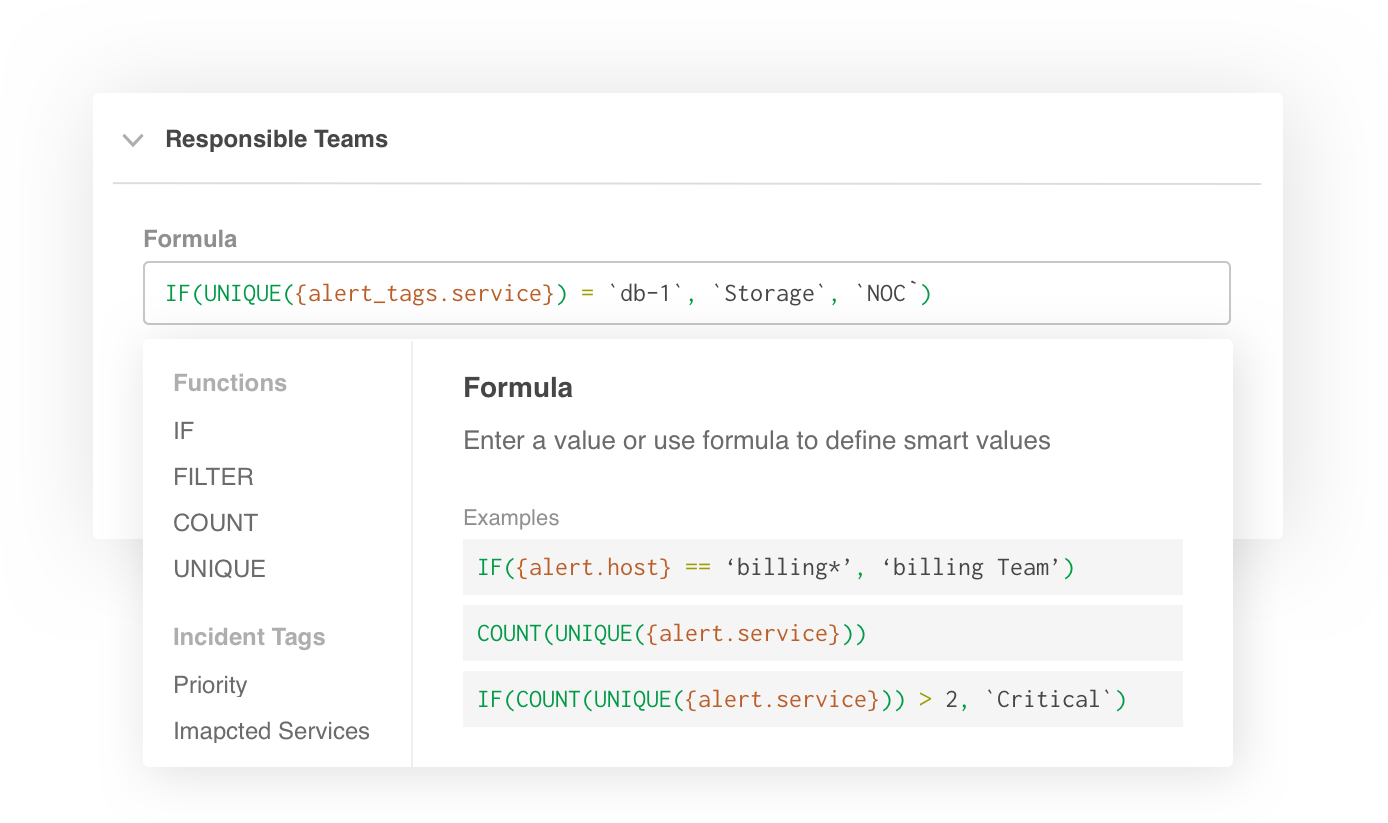Say goodbye to guessing: Automatic Incident Triage by BigPanda

triage
noun
/ˈtriː.ɑːʒ/
the process of examining problems in order to decide which ones are the most serious and must be dealt with first
Low MTTR is the much-desired nirvana-state in IT Operations. One of the most painful parts of the incident management lifecycle, which prevents the achievement of this nirvana, is triage: the time it takes first incident responders to determine the next action when facing a barrage of IT incidents.
Why?
Because these incidents often lack the critical business context necessary to conduct triage: factors like their relative severity based on business priorities, the services or customers they impact, their routing information and more. Without this information, valuable time is wasted tracking down relevant spreadsheets, runbooks and other sources of tribal knowledge, as well as manually calculating business metrics – to determine what to do next.
The result is often substantially longer incident management lifecycles and stubbornly high MTTR. Nirvana continues to be elusive.
Introducing Automatic Incident Triage by BigPanda
To help reduce the burden on first incident responders, and to help their enterprises reduce MTTR, we’re excited to announce the latest enhancement to our Event Correlation and Automation platform: Automatic Incident Triage.
Automatic Incident Triage significantly simplifies and shortens the triage phase of incident management by
- Making it easy to calculate relevant business context and metrics
- Automatically adding that information to incidents
- Enabling those incidents to be automatically routed to the right teams for follow-up, and
- Helping first incident responders to handle a much higher volume of incidents than before.
How does Automatic Incident Triage work?
- First, it allows your IT Ops and NOC teams to create custom incident tags in BigPanda that capture business context and business metrics, such as validated incident severity, impacted services, business priority and routing information.
- Then, it allows operators to automatically calculate values and populate them into these tags, using simple formulas. For example, to determine routing information for an incident based on the affected services and the customer, teams can use a set of simple IF/THEN, COUNT and UNIQUE functions to automatically calculate, and then incorporate a string detailing the responsible team, into the incident tag.
- Once business context is added to an incident tag, it is surfaced to incident responders right inside BigPanda’s Incident 360 Console, alongside the incident. IT Ops and NOC teams now have all the necessary information needed to rapidly conduct triage on the incident. Viewable in a single pane of glass, this dramatically boosts their productivity and efficiency.
- Automatic Incident Triage also enables the automatic triggering of workflows both in BigPanda and in external collaboration tools based on tag values, allowing you to further streamline and shorten your incident management lifecycle. These automations shave critical minutes, further reducing MTTR and helping organizations reclaim FTE hours.
Want to learn more about Automatic Incident Triage?
Visit the Automatic Incident Triage webpage and take a look at this short video. It’ll appeal to both IT Ops teams and fans of space invaders!






